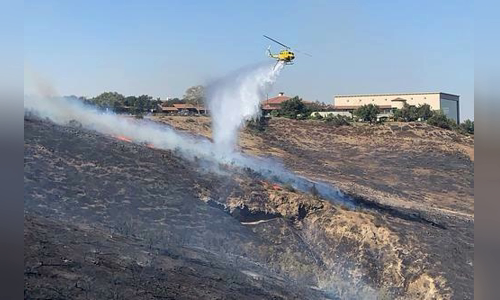The US goat and 500 goats graze the surrounding grass, preventing flames from spreading into the Ronald Reagan presidential library in California on October 30.
The goats were hired by the Reagan Foundation in May and were released on a hill at the foot of the library of the late President Ronald Reagan in the Simi Valley, southern California, USA. They have "eaten up" flammable grasslands and bushes on an area of 5 hectares around the 121-hectare facility, Melissa Giller, a library spokesman, said.

Helicopters spray water on a hill near the presidential library Ronald Reagan, California, USA on October 30 Photo: Reuters
They have created a fire prevention belt that makes the forest fire raging in California slow, spreading firefighters to put out the fire before it slipped into the library of President Ronald Reagan.
These white goats like to eat weeds and other flammable plants, according to owner Scott Morris. The cost to hire this herd to clear the grass is 1,000 USD / 0.4 ha.
"The firefighter told us that the fire hanger makes it easier to put out the fire. The fire just spread to the bush there and stopped, unable to penetrate further to the library, because the flammable grass was already flocked by goats Eat it all, "said Giller.
Strong winds blew the flames that covered the area around the library on the morning of October 30, 15 meters from the home of the Boeing 707 aircraft that was used by President Ronald Reagan. The library is a showcase of the late Reagan documents and events during the 1981-1989 presidency and his burial place with his wife.
The library is the second project to be protected from the storms that hit southern California in the past few days thanks to prevention. On October 29, the Getty Museum in Los Angeles, which displays many works of Van Gogh and ancient Greek statues, said it prevented the flames from entering the building by clearing the surrounding area bushes. around.
California is facing massive wildfires. The Easy Fire forest has so far burned more than 667 hectares, forcing about 30,000 people to leave their homes and destroy many buildings in the area.



 EbonyJones
EbonyJones







